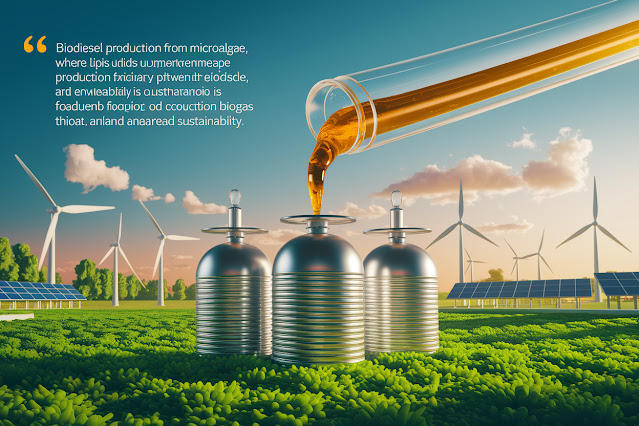Microalgae Biofuels: A Renewable Energy Solution from Nannochloropsis
Microalgae Biofuels: A Renewable Energy Solution from Nannochloropsis
Introduction
As the world grapples with the twin crises of climate change and fossil fuel depletion, the search for sustainable and clean energy sources has become a global priority. Among the emerging technologies, microalgae biofuels stand out as a promising alternative. Derived from microscopic algae like Nannochloropsis, these biofuels offer a renewable, carbon-neutral source of energy that could reshape the future of transportation and power generation.
What Are Microalgae?
Microalgae are unicellular photosynthetic organisms that thrive in a variety of aquatic environments. Unlike terrestrial crops, microalgae do not require fertile land or fresh water for cultivation, making them highly sustainable. Species such as Nannochloropsis have attracted significant attention due to their exceptionally high oil content and robust growth characteristics. Capable of converting sunlight and carbon dioxide into biomass, these algae serve as efficient natural bioreactors.
Biofuel Production from Microalgae
The process of converting microalgae into biofuel involves several key steps:
-
Cultivation: Algae are grown in either open ponds or closed photobioreactors using sunlight, CO₂, and nutrients. Nannochloropsis can be cultivated in saline or wastewater, making it environmentally advantageous.
-
Harvesting: Once a sufficient biomass concentration is achieved, the algae are harvested using techniques such as centrifugation or filtration.
-
Lipid Extraction: The extracted biomass is processed to isolate lipids, typically through chemical solvents or mechanical disruption.
-
Fuel Conversion:
-
Lipids undergo transesterification to produce biodiesel.
-
Residual biomass, rich in carbohydrates and proteins, can be fermented into bioethanol or converted into biogas through anaerobic digestion.
-
Advantages of Microalgae Biofuels
Microalgae-based fuels offer several key benefits over traditional and first-generation biofuels:
-
High Yield: Algae can produce up to 10–100 times more oil per acre than crops like soybeans or corn.
-
Non-Competitive with Food: Since they don’t require arable land, microalgae cultivation does not interfere with food production.
-
Environmental Benefits: Algae absorb CO₂ during photosynthesis, helping to offset emissions from fuel use.
-
Versatility: In addition to fuel, algae biomass can be used for animal feed, fertilizer, cosmetics, and omega-3 supplements.
Challenges to Commercialization
Despite their potential, microalgae biofuels face several obstacles:
-
High Production Costs: Cultivation, harvesting, and lipid extraction are energy-intensive and costly.
-
Technological Barriers: Scaling laboratory success to industrial production remains a challenge.
-
Economic Viability: Without subsidies or co-product revenue, algal biofuels are not yet competitive with petroleum-based fuels.
The Role of Nannochloropsis
Nannochloropsis species are among the most studied microalgae for biofuel applications. They are known for:
-
Lipid contents exceeding 50–60% of dry biomass.
-
High growth rates and resistance to contamination.
-
Ability to grow in a variety of water sources, including seawater and industrial effluents.
Their resilience and productivity make them ideal candidates for commercial-scale biofuel production, particularly in coastal or arid regions unsuitable for conventional agriculture.
Conclusion
Microalgae biofuels, especially from species like Nannochloropsis, represent a forward-looking approach to energy sustainability. While technical and economic hurdles remain, ongoing research and innovation could soon make algae-based energy a viable competitor to fossil fuels. As part of a diversified renewable energy portfolio, microalgae have the potential to play a significant role in the global transition to a low-carbon future.






Comments
Post a Comment